Product Thinking is Problem Solving

- 939 shares
- 2 years ago
Design thinking is a non-linear, iterative process that teams use to understand users, challenge assumptions, redefine problems and create innovative solutions to prototype and test. It is most useful to tackle ill-defined or unknown problems and involves five phases: Empathize, Define, Ideate, Prototype and Test.
Design thinking is a non-linear, iterative process that teams use to understand users, challenge assumptions, redefine problems, and create innovative solutions to prototype and test. It is most useful to tackle problems that are ill defined or unknown. In a rapidly changing world, organizations must be able to adapt and innovate quickly to survive. Design thinking is a powerful tool that can help organizations to do just that. By focusing on the user and their needs, he can help teams to develop creative solutions
that meet the real needs of the people they serve. The end goal of a design thinking process is to create a solution that is desirable, feasible and viable. This means that your product should satisfy the needs of a user, be feasible to implement and have a financial model as well. During the bulk of your design thinking process, you'll focus on desirability as you are concerned with testing your ideas and validating your hypothesis about your users.
Towards the end of your project, however, you should bring the focus to feasibility and viability so that your solution can be sustainable.
“Design thinking is a human-centered approach to innovation that draws from the designer's toolkit to integrate the needs of people, the possibilities of technology, and the requirements for business success.”
— Tim Brown, CEO of IDEO
Design thinking fosters innovation. Companies must innovate to survive and remain competitive in a rapidly changing environment. In design thinking, cross-functional teams work together to understand user needs and create solutions that address those needs. Moreover, the design thinking process helps unearth creative solutions.
Design teams use design thinking to tackle ill-defined/unknown problems (aka wicked problems). Alan Dix, Professor of Human-Computer Interaction, explains what wicked problems are in this video.
Wicked problems have properties... a whole list of properties. I got some of them here. One of them is about being unique. It doesn't mean you can't learn from previous ones, but you can't just take the solution you have from previous problem and apply it to new ones. Wicked problems, each one you have to look at individually. There's no definitive formulation that is actually even stating what the problem is, is problematic. Non-enumerable. You can't just go through a set of things and say which one of these is better.
The space of potential ways you might tackle it is unbounded, so you can't just try the first idea and second idea. You've got to go beyond that. It's all about one shot operation, and this is about the fact that often you have to start executing the solution before you know what it is So imagine you are in the desert and you've only got a certain amount of water and you don't know which way to go. And you spot a sort of high, a very high dune. What you might do is walk to the dune in order to spy the land.
But walking in to the dune, is a long way away, you, of course, use up some of your water. You got hot. You've used up some of your food. You've you've committed yourself. And real problems are often like that. No stopping rule Have you finished? And that's relates to the fact that often in the real world, you can't just say I've done it because actually you tend to have things that are better or worse solutions rather than the perfect solution. The right solution versus no solution.
And so you're probably not trying to solve the economy, but these kinds of characteristics you actually will find in a lot of real design problems. So they are difficult and that's why you need to think creatively. You're not unique in having to solve some of these issues.
Wicked problems demand teams to think outside the box, take action immediately, and constantly iterate—all hallmarks of design thinking.
Don Norman, a pioneer of user experience design, explains why the designer’s way of thinking is so powerful when it comes to such complex problems.
I want to talk about 21st Century Design. So, what do I mean by that? I mean it's a different kind of design. It's not the traditional design where we make beautiful, wonderful objects and wonderful experiences. It's about thinking about design as *a way of thinking*, *a way of addressing the major problems of the world* because designers have a special way of addressing issues. We call it *Design Thinking* – it comes under many other different names.
But it's what designers have been doing for, well, since the beginning of designers. What is design as a way of thinking? Well, here's how I like to talk about it. First of all, well, it's *human-centered*. So, we always *focus upon the people*, and that's very important because it's the *only* discipline where the *major focus is about making things that are appropriate for people*. Second, we *solve the right problem*.
Third, we *recognize that everything is a system*. You can't solve one little piece, because everything is interconnected. So, you have to really look at the nature of the system. And, finally – and this is extremely important – we *don't rush* to a solution. We know that when we're dealing with human beings and societies and different cultures and political forces and economic factors that whatever we do is *probably not* going to be right.
So, what we do is we *try a simple, small intervention*. We see what the results are; then we modify it, and we continually experiment, do an intervention, learn from it, change what we're doing, and slowly we'll get bigger and bigger because each one allows us to do even more the next time, and we'll get better and better. Design is an interesting discipline.
They learn the techniques; they learn the problem-solving and problem-defining methods; they have a whole bunch of powerful tools. And then, because we don't know the details of healthcare or even housing, we have to bring in the experts; so, we have to have a multidisciplinary team where we work together with people from all types of skills. And the most important thing – this has to *come from the people*.
We can mentor. We can facilitate. We can bring in other resources. You have difficulty – individuals have *difficulty tackling the whole system* or tackling the *political issues*, but that's where *we* can come in and help. So, we call that *community-driven design*, which is a subset of *human-centered design*, which, as far as I am concerned, is really about *designing for humanity*. So, human-centered design is a subset of *humanity-driven design*, *humanity-centered design*, because we're trying to save
– well – the planet.
Design thinking offers practical methods and tools that major companies like Google, Apple and Airbnb use to drive innovation. From architecture and engineering to technology and services, companies across industries have embraced the methodology to drive innovation and address complex problems.
The design thinking process aims to satisfy three criteria: desirability (what do people desire?), feasibility (is it technically possible to build the solution?) and viability (can the company profit from the solution?). Teams begin with desirability and then bring in the other two lenses.
© Interaction Design Foundation, CC BY-SA 4.0
The design thinking process starts by looking at the needs, dreams and behaviors of people—the end users. The team listens with empathy to understand what people want, not what the organization thinks they want or need. The team then thinks about solutions to satisfy these needs from the end user’s point of view.
Once the team identifies one or more solutions, they determine whether the organization can implement them. In theory, any solution is feasible if the organization has infinite resources and time to develop the solution. However, given the team’s current (or future resources), the team evaluates if the solution is worth pursuing. The team may iterate on the solution to make it more feasible or plan to increase its resources (say, hire more people or acquire specialized machinery).
At the beginning of the design thinking process, teams should not get too caught up in the technical implementation. If teams begin with technical constraints, they might restrict innovation.
A desirable and technically feasible product isn’t enough. The organization must be able to generate revenues and profits from the solution. The viability lens is essential not only for commercial organizations but also for non-profits.
Traditionally, companies begin with feasibility or viability and then try to find a problem to fit the solution and push it to the market. Design thinking reverses this process and advocates that teams begin with desirability and bring in the other two lenses later.
Stanford University’s Hasso Plattner Institute of Design, commonly known as the d.school, is renowned for its pioneering approach to design thinking. Their design process has five phases: Empathize, Define, Ideate, Prototype, and Test. These stages are not always sequential. Teams often run them in parallel, out of order, and repeat them as needed.
To create great user experiences. UX design teams use a five phase process: Empathize, define, ideate, prototype and test. In the empathize phase, teams explore the problem they're trying to solve with the product. User researchers conduct interviews with people affected by the problem and review existing knowledge of the issue. The stage is about knowing what needs to be solved and why.
At the defined stage, user researchers turn their knowledge into a research plan and conduct more targeted tests. They'll learn more about their users and what they're currently doing to solve the problem. Then they'll put their findings into deliverables. Tools for the UX designers to reference when they start designing solutions. These include: user Journey Maps, to show how users try and solve the problem and present. Personas, which are details of typical users.
Affinity Diagrams of what those users think, feel, see and do. And "How might we" statements that list the problem teams are trying to solve with the product. In the ideate phase, teams ensure everyone has a shared understanding of the problem. Someone will then lead a brainstorming session where the team will consider solutions for the first time. The team will come up with as many ideas as possible, even if they're silly sounding or impractical. Afterwards, they will evaluate the options and choose the most viable
and effective solutions from those ideas. In the prototyping phase, the UX designers turn those design ideas into testable prototypes. These prototypes could be low fidelity, digital prototypes or even paper prototypes. The UX designers will do their best to make sure the product is intuitive to use and make multiple versions of those design ideas. In the test phase, researchers get participants to test the prototype and get feedback.
From that they deliver usability test reports to the designers. Who then make new prototypes based on that feedback. products will get increasingly polished and refined with cycles of testing until a final design is settled on. Then the design will be developed and shipped. You think it's all over here, but not quite. Product development is cyclical and non-linear. The product can still be revamped based on real user feedback, and in that revamp you may repeat some or all of the design phases.
New information could even set development right back to the planning stage once again.
The team aims to understand the problem, typically through user research. Empathy is crucial to design thinking because it allows designers to set aside your assumptions about the world and gain insight into users and their needs.
Once the team accumulates the information, they analyze the observations and synthesize them to define the core problems. These definitions are called problem statements. The team may create personas to help keep efforts human-centered.
With the foundation ready, teams gear up to “think outside the box.” They brainstorm alternative ways to view the problem and identify innovative solutions to the problem statement.
This is an experimental phase. The aim is to identify the best possible solution for each problem. The team produces inexpensive, scaled-down versions of the product (or specific features found within the product) to investigate the ideas. This may be as simple as paper prototypes.
The team tests these prototypes with real users to evaluate if they solve the problem. The test might throw up new insights, based on which the team might refine the prototype or even go back to the Define stage to revisit the problem.
These stages are different modes that contribute to the entire design project rather than sequential steps. The goal is to gain a deep understanding of the users and their ideal solution/product.
There is no single definition or process for design thinking. The five-stage design thinking methodology described above is just one of several frameworks.
Design thinking improves the world around us every day because of its ability to generate groundbreaking solutions. You can contribute to the future developments in a similar way if you adopt the design thinking mindset into your own work procedures. But first, you need to know what the five phases of design thinking are. And that's what this video will teach you. Design thinking is a *non-linear, iterative process* that can have anywhere from three to seven phases, depending on who you talk to.
The model we chose to focus on here at IxDF has five. As we mentioned, the design thinking process is *non-linear* and *iterative*. This means you don't have to follow the five phases in any particular order. You can carry out the stages in parallel or repeat them and circle back to a previous stage at any point in the process. Basically, don't ever think these pieces are set in stone. The whole point of design thinking is that it allows you to work in a *dynamic way* to *develop and launch innovative ideas*.
There's no need to use design thinking as a step-by-step process, unless the situation calls for it. Now, you may wonder why we chose to focus on *this* particular variation of the design thinking process. We picked the *5-phase model* because it's the one proposed by the Hasso Plattner Institute of Design at Stanford. Actually, you may have heard it called its more common name: the d-school. They are world-renowned for the way they teach and apply design thinking. So, who better to take inspiration and learn from? And there's no need to worry; you won't miss out!
Regardless of which design thinking model you personally choose to focus on, all variants embody the same principles which were first described in 1969 by Nobel Prize laureate Herbert Simon when he wrote *The Sciences of the Artificial*. We hope this short video has given you a good introduction to the five phases of design thinking. We can't wait for you to learn more about this revolutionary process!
Hasso-Platner Institute Panorama
Ludwig Wilhelm Wall, CC BY-SA 3.0
Innovation doesn’t follow a linear path or have a clear-cut formula. Global design leaders and consultants have interpreted the abstract design process in different ways and have proposed other frameworks of design thinking.
The Head, Heart, and Hand approach by AIGA (American Institute of Graphic Arts) is a holistic perspective on design. It integrates the intellectual, emotional, and practical aspects of the creative process.
More than a process, the Head, Heart and Hand framework outlines the different roles that designers must perform to create great results.
© American Institute of Graphic Arts, Fair Use
“Head” symbolizes the intellectual component. The team focuses on strategic thinking, problem-solving and the cognitive aspects of design. It involves research and analytical thinking to ensure that design decisions are purposeful.
“Heart” represents the emotional dimension. It emphasizes empathy, passion, and human-centeredness. This aspect is crucial in understanding the users’ needs, desires, and experiences to ensure that designs resonate on a deeper, more personal level.
“Hand” signifies the practical execution of ideas, the craftsmanship, and the skills necessary to turn concepts into tangible solutions. This includes the mastery of tools, techniques, and materials, as well as the ability to implement and execute design ideas effectively.
IDEO is a leading design consultancy and has developed its own version of the design thinking framework.
IDEO’s design thinking process is a cyclical three-step process that involves Inspiration, Ideation and Implementation.
© IDEO, Public License
In the “Inspire” phase, the team focuses on understanding users’ needs, behaviors, and motivations. The team empathizes with people through observation and user interviews to gather deep insights.
In the “Ideate” phase, the team synthesizes the insights gained to brainstorm a wide array of creative solutions. This stage encourages divergent thinking, where teams focus on quantity and variety of ideas over immediate practicality. The goal is to explore as many possibilities as possible without constraints.
In the “Implement” phase, the team brings these ideas to life through prototypes. The team tests, iterates and refines these ideas based on user feedback. This stage is crucial for translating abstract concepts into tangible, viable products, services, or experiences.
The methodology emphasizes collaboration and a multidisciplinary approach throughout each phase to ensure solutions are innovative and deeply rooted in real human needs and contexts.
In the book Designing Social Systems in a Changing World, Béla Heinrich Bánáthy, Professor at San Jose State University and UC Berkeley, created a “divergence-convergence model” diagram. The British Design Council interpreted this diagram to create the Double Diamond design process model.
As the name suggests, the double diamond model consists of two diamonds—one for the problem space and the other for the solution space. The model uses diamonds to represent the alternating diverging and converging activities.
© Design Council, CC BY 4.0
In the diverging “Discover” phase, designers gather insights and empathize with users’ needs. The team then converges in the “Define” phase to identify the problem.
The second, solution-related diamond, begins with “Develop,” where the team brainstorms ideas. The final stage is “Deliver,” where the team tests the concepts and implements the most viable solution.
This model balances expansive thinking with focused execution to ensure that design solutions are both creative and practical. It underscores the importance of understanding the problem thoroughly and carefully crafting the solution, making it a staple in many design and innovation processes.
With the widespread adoption of the double diamond framework, Design Council’s simple visual evolved.
© Design Council, CC BY 4.0
In this expanded and annotated version, the framework emphasizes four design principles:
Be people-centered.
Communicate (visually and inclusively).
Collaborate and co-create.
Iterate, iterate, iterate!
The updated version also highlights the importance of leadership (to create an environment that allows innovation) and engagement (to connect with different stakeholders and involve them in the design process).
On the surface, design thinking frameworks look very different—they use alternative names and have different numbers of steps. However, at a fundamental level, they share several common traits.
© Interaction Design Foundation, CC BY-SA 4.0
Start with empathy. Focus on the people to come up with solutions that work best for individuals, business, and society.
Reframe the problem or challenge at hand. Don’t rush into a solution. Explore the problem space and look at the issue through multiple perspectives to gain a more holistic, nuanced understanding.
Initially, employ a divergent style of thinking (analyze). In the problem space, gather as many insights as possible. In the solution space, encourage team members to generate and explore as many solutions as possible in an open, judgment-free ideation space.
Later, employ a convergent style of thinking (synthesize). In the problem space, synthesize all data points to define the problem. In the solution space, whittle down all the ideas—isolate, combine and refine potential solutions to create more mature ideas.
Create and test prototypes. Solutions that make it through the previous stages get tested further to remove potential issues.
Iterate. As the team progresses through the various stages, they revisit different stages and may redefine the challenge based on new insights.
Design thinking is a non-linear process. For example, teams may jump from the test stage to the define stage if the tests reveal insights that redefine the problem. Or, a prototype might spark a new idea, prompting the team to step back into the ideate stage. Tests may also create new ideas for projects or reveal insights about users.
© Interaction Design Foundation, CC BY-SA 4.0
A mindset is a characteristic mental attitude that determines how one interprets and responds to situations. Design thinking mindsets are how individuals think, feel and express themselves during design thinking activities. It includes people’s expectations and orientations during a design project.
Without the right mindset, it can be very challenging to change how we work and think.
The key mindsets that ensure a team can successfully implement design thinking are.
Be empathetic: Empathy is the ability to place yourself, your thinking and feelings in another person’s shoes. Design thinking begins from a deep understanding of the needs and motivations of people—the parents, neighbors, children, colleagues, and strangers who make up a community.
Be collaborative: No one person is responsible for the outcome when you work in a team. Several great minds are always stronger than just one. Design thinking benefits from the views of multiple perspectives and lets others’ creativity bolster your own.
Be optimistic: Be confident about achieving favorable outcomes. Design thinking is the fundamental belief that we can all create change—no matter how big a problem, how little time, or how small a budget. Designing can be a powerful process no matter what constraints exist around you.
Embrace ambiguity: Get comfortable with ambiguous and complex situations. If you expect perfection, it is difficult to take risks, which limits your ability to create radical change. Design thinking is all about experimenting and learning by doing. It gives you the confidence to believe that new, better things are possible and that you can help make them a reality.
Be curious: Be open to different ideas. Recognize that you are not the user.
Reframe: Challenge and reframe assumptions associated with a given situation or problem. Don’t take problems at face value. Humans are primed to look for patterns. The unfortunate side effect of these patterns is that we form (often false and sometimes dangerous) stereotypes and assumptions. Design thinking aims to help you break through any preconceived notions and biases and reframe challenges.
Embrace diversity: Work with and engage people with different cultural backgrounds, experiences, and ways of thinking and working. Everyone brings a unique perspective to the team. When you include diverse voices in a team, you learn from each other’s experiences, further helping you break through your assumptions.
Make tangible: When you make ideas tangible, it is faster and easier for everyone on the team to be on the same page. For example, sketching an idea or enacting a scenario is far more convenient and easy to interpret than an elaborate presentation or document.
Take action: Run experiments and learn from them.
Teams often use design thinking and agile methodologies in project management, product development, and software development. These methodologies have distinct approaches but share some common principles.
Both methodologies emphasize iterative development. In design thinking, teams may jump from one phase to another, not necessarily in a set cyclical or linear order. For example, on testing a prototype, teams may discover something new about their users and realize that they must redefine the problem. Agile teams iterate through development sprints.
The agile and design thinking methodologies focus on the end user. All design thinking activities—from empathizing to prototyping and testing—keep the end users front and center. Agile teams continually integrate user feedback into development cycles.
Both methodologies rely heavily on collaboration among cross-functional teams and encourage diverse perspectives and expertise.
With its focus on user research, prototyping and testing, design thinking ensures teams remain in touch with users and get continuous feedback. Similarly, agile teams monitor user feedback and refine the product in a reasonably quick time.
© Interaction Design Foundation, CC BY-SA 4.0
In this video, Laura Klein, author of Build Better Products, describes a typical challenge designers face on agile teams. She encourages designers to get comfortable with the idea of a design not being perfect. Notice the many parallels between Laura’s advice for designers on agile teams and the mindsets of design thinking.
A really hard part about agile design for a lot of designers is this idea that we're going to put something out into the world that isn't perfect. It's tempting to spend a lot of time tinkering with things, adding those little elements that we think will delight users. A lot of those things tend to get skipped on agile teams, and that can be really disheartening, frankly. The thing is, they're *not supposed to be skipped* on agile teams. It's kind of sad that they often are, but on good agile teams that are constantly iterating and improving,
there's plenty of time to add those touches and to perfect the design. The key is *not to do it too soon*, and again this can be tough. A lot of designers seem to have some sort of belief in the idea of good design as its own thing, like there's a cosmic governing panel that decides whether something is well designed that's totally independent of whether the product makes users happy or makes money for the company or makes the world a better place. And it's a tricky balance. I'm the first one to point out that if you release an incredibly crappy product,
you're not going to learn anything other than whether or not people like to use crappy products. We're already pretty clear on that – they don't. On the other hand, if you spend months tweaking the fonts and obsessing over every single word or loading the product up with unnecessary features, you're very likely to waste a huge amount of time and money building things that nobody cares about but you. I really wish I had a simple system that would allow you to decide when you've hit *good enough* every single time. You know – a "Can I ship it yet? [] Yes [] No"; maybe someday we'll get that working.
Until then, I want to talk about cooking for a minute. Stay with me; I promise it'll all come together. It might make you a little hungry, though. Let's say you're cooking dinner, and the first step in this brand-new recipe you're trying out is to cut up some potatoes. Now, if you do a terrible job of it and hack them up into uneven pieces, it's probably going to ruin the dish and make it inedible because half of the potatoes will be raw and half will be overcooked and mushy and the whole thing will be awful. If you're not much of a cook, the important thing to understand here is that things of wildly different sizes tend to cook at different rates.
And that ends up with some things being overdone and some things being underdone. So, instead of doing that, you take a little time, you use good knife skills and you cut the potatoes better. But now you have to decide how much time you're going to spend on the potatoes. Obviously, you could make them perfect, where "perfect" means all exactly the same size and shape and weight, or cut into animal shapes or trapezoids or whatever. Molecular gastronomists have almost certainly discovered the golden ratio of surface area to interior of potato,
and I am sure that they would love to tell you all about it. But the more time you spend carving your potatoes into identically sized polygons or whatever, the less time you have for cooking the rest of the meal. And, frankly, having the potatoes perfect doesn't contribute that much to the overall meal. The end result of perfect potatoes might not be *noticeable* to the person eating the meal, and even if they did notice, it wouldn't increase their enjoyment of the meal enough to justify the time it took you to do it.
Nobody wants perfect potatoes at midnight. They want good potatoes at 7pm. Remember, your goal isn't to make a perfect potato, whatever that means; your goal is to *make dinner* – preferably a dinner that people enjoy eating. And what even is a perfect potato, anyway? Maybe you get them all the exact same size but they're still too big, so they take too long to cook, and what you should have done was make them 20% smaller so that they came out at the same time as the rest of the meal. Or maybe what makes a potato perfect depends on who's eating it. I mean, if you're ever cooking it for me, just make mine sweet potatoes and just go ahead and fry them, OK?
So, what's the solution? *Satisficing and iteration*. What is satisficing? That doesn't sound like a word. Satisficing is a decision-making process that aims for *adequate or good enough*. What makes the potatoes good enough to eat and enjoy but doesn't take so much time that you never get them on the table and you don't have to take a bunch of expensive cooking lessons just to get them right? By the way, before you get mad at me and say, "We shouldn't just be going for good enough!" – *yes*, we should!
That's what *good enough* means! As long as we're not defining good enough as "barely edible" – we're just defining it as something we can make that people will enjoy eating. In agile design, we're also often saying that good enough is something that people will be able to use to *solve a problem* and that we can *learn something from*. What we want to learn is: *What would make the thing even better?* Because on agile teams and, honestly, when cooking potatoes, we get to *iterate*. I mean, no, you're hopefully not going to just keep throwing out the potatoes and doing them over and
over and over again before ever serving them, but the neat thing about dinner is that a lot of us eat it every night. We can try these potatoes tomorrow or next week or whenever we feel like it. Maybe we wouldn't try out a brand-new recipe if our boss was coming over for dinner, but you could practice making potatoes as often as you want. Same with a lot of the kinds of products that we build using agile technologies. We get to make things and share them with subsets of users in safe environments and get feedback and then make them better. And the cool thing is when we iterate like this we actually start to develop an idea of what *better* means.
Let's say the first time that we make the potatoes we cut them roughly the same size, but we try not to stress too much about them being a little off. This lets you get the potatoes on the table so that you or your family or whoever you are cooking them for can try them. Maybe the potatoes would be better if you cut them a little smaller. Maybe the dish needs twice as many potatoes. Maybe you decide to substitute cauliflower potatoes like a terrible person who hates food. Maybe the problem isn't the potatoes at all – it's the spices; they're all wrong; you didn't see that coming, did you?
You'll have a much better idea of what *better* means once you've shipped the meal and gotten feedback about what people liked and hated and what they left on the plate and why. This is why I say there's nothing wrong with aiming for good enough, especially on the first few versions of something. Good enough doesn't mean gross and inedible, and it doesn't mean too broken or bad to learn from. It definitely doesn't mean we're never improving on it. It means we're getting something out that is *good enough to get feedback on and then we can improve it over time*.
Besides, spending less time obsessing about the potatoes lets you spend time on more important things like the fact that you should have just made dessert and ordered a pizza!
While design thinking and agile teams share principles like iteration, user focus, and collaboration, they are neither interchangeable nor mutually exclusive. A team can apply both methodologies without any conflict.
From a user experience design perspective, design thinking applies to the more abstract elements of strategy and scope. At the same time, agile is more relevant to the more concrete elements of UX: structure, skeleton and surface. For quick reference, here’s an overview of the five elements of user experience.
When we hear the term 'user experience', we tend to think in terms of screens, websites, mobile apps or other smart technology. But that's just the tip of the iceberg. The Elements of User Experience In the book *The Elements of User Experience: User-Centered Design for the Web*, Jesse James Garrett outlines five elements of user experience: strategy, scope, structure, skeleton and surface.
Before beginning any work, product teams conduct user research to understand who their target users are and what the users' needs are. It's important for teams to be aware of the business's goals and objectives because if the product does not return a profit, the business will not be sustainable. The strategy helps you identify *who you are designing for and why*. The scope defines *what you will be designing*. Designers work collaboratively with all stakeholders to identify
what features and functionality will help address user needs. While the *scope defines what a solution does*, the *structure defines how the product or solution works*. You create the blueprint of how the system works behind the scenes and how people, the users, interact with it. You then create the *skeleton*, laying out the first interfaces of the solution and creating the first tangible elements of user experience.
And, finally, you flesh out the skeleton to create the most visible element – the *surface* that your users see and interact with. Much like an iceberg, there is so much more to UX than meets the eye. And, just as in the case of an iceberg, each element of UX above and below the surface affects the other. Decisions taken at one plane can cascade up or down the layers. For example, if you introduce a new feature, a change in the scope, it will impact all the elements above.
You might even find users interacting with your product in unexpected ways, prompting you to rethink your strategy. There will likely be unknown considerations that emerge later, which might impact the experience. For example, if the team encounters technical challenges or budgetary constraints during development, they might have to revisit some design decisions. User experience design is concerned with *all* the decisions leading up to the surface,
from the most abstract to the most concrete, from the known to the unknown, and continues to evolve throughout the life of the product.
Design thinking is more about exploring and defining the right problem and solution, whereas agile is about efficiently executing and delivering a product.
Here are the key differences between design thinking and agile.
| Design Thinking | Agile |
Origins | It primarily originates in design and borrows from multiple disciplines, including psychology, systems thinking, and business strategy. | It primarily originates from software development and borrows from disciplines such as manufacturing and project management. |
Primary Focus | Problem-solving and innovative solutions. | Efficient product delivery. |
Phase of Application | Usually, toward the beginning of a project. Aims to define the problem and test and pick a solution. | Usually, after teams have a clear solution. Aims to deliver that solution and continuously iterate on the live product. |
Structure and Documentation | Fluid process, less formal and relatively lesser documentation. | Structured and formal process with extensive documentation. |
End Product | An idea or solution, usually with a prototype, may not be tangible. | Tangible, working product (usually software) shipped to end users. |
A design sprint is a 5-day intensive workshop where cross-functional teams aim to develop innovative solutions.
The design sprint is a very structured version of design thinking that fits into the timeline of a sprint (a sprint is a short timeframe in which agile teams work to produce deliverables). Developed by Google Ventures, the design sprint seeks to fast-track innovation.
In this video, user researcher Ditte Hvas Mortensen explains the design sprint in detail.
In this video, we'll teach you how to use Google's design sprint process to create great design faster. In an age of tight resources, companies are more reluctant than ever to commit to big design projects without a thorough understanding of their chances of success. Google has developed a method to make the design process fast and still offer valuable insight. The process developed by Google Ventures is called a *design sprint*.
It focuses on getting insights into *critical business questions* within a very short timeframe – just five days. The process is based on *design thinking*, so it attempts to gain those insights via *rapid design*, *prototype development* and *user testing*. The design sprint is a five-phase process. Each phase takes approximately one day or eight hours to perform. So, a sprint can be done in five days. The five phases of Google's design sprint are *understand*,
*sketch*, *decide*, *prototype* and *validate*. The design sprint is a *linear process*, but you are strongly encouraged to *make revisions* based on your first sprint and then *reiterate the prototype and validate phases*. You can also move further back to earlier phases and reiterate from there. In the following, we'll look at each step in more detail, but let's start by taking a quick look at how to plan a design sprint. To ensure that the design sprint will be successful, some *planning ahead* is required.
Before the sprint begins, here are some things you should consider. You should *write a brief* to state the sprint's goal and bring everyone on the same page. You might also need to collect or *conduct user research* to get insights that can inform the work you do during the sprint. *Consider who should be on the sprint team.* Google's sprint process is designed to be run by teams rather than individuals. That means getting everyone together and ensuring that they're all aiming in the same direction. The ideal team would include representatives from all relevant functions and at all levels in the organization.
You could also invite external people – for instance, a representative user or stakeholder. You need a *suitable space* for the sprint, typically somewhere bright, quiet, with lots of wall space and enough room for people to move about will be suitable. You have to *gather supplies* for the sketching and prototyping phases. Typically, you need office supplies like Post-its, blank sheets of paper, color markers, tape, and so on. Finally, you should choose a good *icebreaker exercise* to kick off your design sprint.
Some members of your team might not have worked together before, so it's good to start off with an activity to warm people up. Now, let's take a look at each stage in the execution of the actual sprint. In the understand session, your goal is to *create shared knowledge* about the business problem you're working on. You bring everyone together and unpack all of your team's knowledge about the problem.
*Lightning talks*, where knowledge experts use 10 to 15 minutes to share their knowledge about the problem, is an important part of the understand session. Typical topics for a lightning talk are *business goals*, *insights from user research*, an *overview of competitive products*, *technical opportunities*, and so on. As part of the lightning talk, it can be a good idea to have a presentation by someone from senior management outlining why the problem you're working on is important to the business. Other typical activities of the understand phase are demonstrations of solutions that are already available,
a detailed walkthrough of any proposed solution, creating user journeys and performing user research. In the understand session, it's also a good idea to be *clear on the metrics of success*. And remember, your metrics should be useful and not pulled out of thin air. When you do the understand session, it's important to involve the whole team. Don't let an individual or group dominate the proceedings. The idea is to ensure everyone is on the same page, and the only way to do that is if everyone is heard from.
Once everyone is on the same page, it's time to split the team up and get them to start working on solutions. Sketch day is an *individual effort*. Everyone is tasked with coming up with a detailed solution to the problem. It's a good idea to do this on paper for two reasons. First, it's quick and it takes no time to make changes. Second, everybody is able to sketch so they can participate even if they don't know any wireframing tools.
For particularly complex, large-scale problem solving, you might want to break up the problem into *manageable chunks* and assign people a chunk rather than the whole problem. The aim of sketch day is to get as many ideas down as possible. If your team is large and you generate a ton of ideas, you might want to allocate an hour at the end of the day to quickly *reduce the number of ideas* to a more manageable number before you go into the third day of the sprint. As you might expect, decide day is all about *making a decision* about which idea
you're going to take to the prototype phase. But there's more to decide day than making a decision. It's also about working out how your solutions might conflict with your objectives and abilities. You can start the day by quickly listing any assumptions that you are making about things like budget, users, technology capacity and business drivers. Then it's time to review each idea and look at the conflicts that it generates. You should have an objective in mind during your review.
Would you be looking to take a single great idea forward to prototyping? Or are you going to pick, say, a top 5 and take those forward? You should be looking to constantly *refine* your list and remove ideas that simply aren't feasible early in the process. The entire team takes part in the decision process by participating in discussions and through voting for ideas. Once you have an idea or ideas you want to prototype, the last part of decide day is to *create some storyboards for your ideas*.
The storyboard should show each interaction with the user in a step-by-step process, and they'll be your specification for your prototype. You might also want to define a *user story* or two to help beef up the specification. As the title implies, on prototype day you have a single day to *create a prototype* that your users can test on the final day. First of all, storyboard what you're going to build if you haven't already done that. To build a prototype, you can use any tool of your choice.
Just pick one that you master enough for rapid prototyping. The important thing is, don't attempt to learn a new tool on this day. Just use *whatever you're most comfortable with*. Finally, remember to *leverage the whole team*. Assign tasks and get everyone building or helping with something. Prototyping isn't just for the engineers. Get people to document, write, review, plan a user test – any activity that contributes towards your end goal.
On day 5, you *validate your idea*. The most important part of the validation is to bring in a group of your end users to test your prototype. It's important that the entire team gets to *observe the users interact with the product* either directly or through watching recordings of your test. A *cognitive walkthrough* or *brief usability test* are great tools to use in this phase. Other good activities to validate your design – to bring in experts and management stakeholders to review your idea.
Everyone on the team should make notes and record what they feel they've learned. You want to take these notes and summarize them at the end of the day. This should help you decide if anything needs iterating and improving. At the end of the final day, take some time with the whole team to reflect on your experience. As Google puts it, there can be three possible outcomes to a sprint: an *efficient failure* – perhaps your ideas didn't work so well, but you learned a lot in the process
and saved your team a lot of time from going down the wrong path; a *flawed success* – perhaps some ideas worked nicely, while others didn't: this gives you insights on what can be improved and what you could work on next; finally, an *epic win* – the ideas your team had have shown great promise and seem to work really well. You're ready to move into a more serious implementation phase. Either way, you can only win! Whether it's by avoiding failure, learning where more work needs to be put in
or generating a killer design, you can only emerge from the design *wiser and more experienced*. The added bonus is that the time you've sacrificed for this is relatively *short*. Though this is a tried-and-tested method by Google, it's also a relatively new concept adapted from Agile methods. It might take a few tries within your organization to keep the sprint to five days. That's OK. You can work towards delivering faster sprints as you get more practice. Google design sprints should help you take a process that currently takes months and make it lean and efficient.
It's not a substitute for all design processes, especially not for very complex products, but it's one that lets you ideate and test ideas incredibly fast. A highly productive design team working in sprints is more likely to add business value and be recognized for their work within the larger organization. Finally, we encourage you to take a look at Google's Design Sprint Kit to get more ideas and tools for how to run your own design sprint.
Design consultancy IDEO’s designkit is an excellent repository of design thinking tools and case studies.
To keep up with recent developments in design thinking, read IDEO CEO Tim Brown’s blog.
Enroll in our course Design Thinking: The Ultimate Guide—an excellent guide to get you started on your design thinking projects.
You don’t need any certification to practice design thinking. However, learning about the nuances of the methodology can help you:
Pick the appropriate methods and tailor the process to suit the unique needs of your project.
Avoid common pitfalls when you apply the methods.
Better lead a team and facilitate workshops.
Increase the chances of coming up with innovative solutions.
IxDF has a comprehensive course to help you gain the most from the methodology: Design Thinking: The Ultimate Guide.
Anyone can apply design thinking to solve problems. Despite what the name suggests, non-designers can use the methodology in non-design-related scenarios. The methodology helps you think about problems from the end user’s perspective. Some areas where you can apply this process:
Develop new products with greater chances of success.
Address community-related issues (such as education, healthcare and environment) to improve society and living standards.
Innovate/enhance existing products to gain an advantage over the competition.
Achieve greater efficiencies in operations and reduce costs.
Use the Design Thinking: The Ultimate Guide course to apply design thinking to your context today.
A framework is the basic structure underlying a system, concept, or text. There are several design thinking frameworks with slight differences. However, all the frameworks share some traits. Each framework:
Begins with empathy.
Reframes the problem or challenge at hand.
Initially employs divergent styles of thinking to generate ideas.
Later, it employs convergent styles of thinking to narrow down the best ideas,
Creates and tests prototypes.
Iterates based on the tests.
Some of the design thinking frameworks are:
5-stage design process by d.school
7-step early traditional design process by Herbert Simon
Head, Heart and Hand by the American Institution of Graphic Arts (AIGA)
The 5-Stage DeepDive™ by IDEO
The “Double Diamond” Design Process Model by the Design Council
Collective Action Toolkit (CAT) by Frog Design
The LUMA System of Innovation by LUMA Institute
For details about each of these frameworks, see 10 Insightful Design Thinking Frameworks: A Quick Overview.
IDEO’s 3-Stage Design Thinking Process consists of inspiration, ideation and implementation:
Inspire: The problem or opportunity inspires and motivates the search for a solution.
Ideate: A process of synthesis distills insights which can lead to solutions or opportunities for change.
Implement: The best ideas are turned into a concrete, fully conceived action plan.
IDEO is a leader in applying design thinking and has developed many frameworks. Find out more in10 Insightful Design Thinking Frameworks: A Quick Overview.
Design Council's Double Diamond diagram depicts the divergent and convergent stages of the design process.
© Design Council, CC BY 4.0
Béla H. Bánáthy, founder of the White Stag Leadership Development Program, created the “divergence-convergence” model in 1996. In the mid-2000s, the British Design Council made this famous as the Double Diamond model.
The Double Diamond diagram graphically represents a design thinking process. It highlights the divergent and convergent styles of thinking in the design process. It has four distinct phases:
Discover: Initial idea or inspiration based on user needs.
Define: Interpret user needs and align them with business objectives.
Develop: Develop, iterate and test design-led solutions.
Deliver: Finalize and launch the end product into the market.
Double Diamond is one of several design thinking frameworks. Find out more in 10 Insightful Design Thinking Frameworks: A Quick Overview.
There are several design thinking methods that you can choose from, depending on what stage of the process you’re in. Here are a few common design thinking methods:
User Interviews: to understand user needs, pain points, attitudes and behaviors.
5 Whys Method: to dig deeper into problems to diagnose the root cause.
User Observations: to understand how users behave in real life (as opposed to what they say they do).
Affinity Diagramming: to organize research findings.
Empathy Mapping: to empathize with users based on research insights.
Journey Mapping: to visualize a user’s experience as they solve a problem.
6 Thinking Hats: to encourage a group to think about a problem or solution from multiple perspectives.
Brainstorming: to generate ideas.
Prototyping: to make abstract ideas more tangible and test them.
Dot Voting: to select ideas.
Start applying these methods to your work today with the Design Thinking template bundle.
For most of the design thinking process, you will need basic office stationery:
Pen and paper
Sticky notes
Whiteboard and markers
Print-outs of templates and canvases as needed (such as empathy maps, journey maps, feedback capture grid etc.) You can also draw these out manually.
Prototyping materials such as UI stencils, string, clay, Lego bricks, sticky tapes, scissors and glue.
A space to work in.
You can conduct design thinking workshops remotely by:
Using collaborative software to simulate the whiteboard and sticky notes.
Using digital templates instead of printed canvases.
Download print-ready templates you can share with your team to practice design thinking today.
Design thinking is a problem-solving methodology that helps teams better identify, understand, and solve business and customer problems.
When businesses prioritize and empathize with customers, they can create solutions catering to their needs. Happier customers are more likely to be loyal and organically advocate for the product.
Design thinking helps businesses develop innovative solutions that give them a competitive advantage.
Gain a competitive advantage in your business with Design Thinking: The Ultimate Guide.
The evolution of Design Thinking can be summarised in 8 key events from the 1960s to 2004.
© Interaction Design Foundation, CC BY-SA 4.0.
Herbert Simon’s 1969 book, "The Sciences of the Artificial," has one of the earliest references to design thinking. David Kelley, founder of the design consultancy IDEO, coined the term “design thinking” and helped make it popular.
For a more comprehensive discussion on the origins of design thinking, see The History of Design Thinking.
Some organizations that have employed design thinking successfully are:
Airbnb: Airbnb used design thinking to create a platform for people to rent out their homes to travelers. The company focused on the needs of both hosts and guests. The result was a user-friendly platform to help people find and book accommodations.
PillPack: PillPack is a prescription home-delivery system. The company focused on the needs of people who take multiple medications and created a system that organizes pills by date and time. Amazon bought PillPack in 2018 for $1 billion.
Google Creative Lab: Google Creative Lab collaborated with IDEO to discover how kids physically play and learn. The team used design thinking to create Project Bloks. The project helps children develop foundational problem-solving skills "through coding experiences that are playful, tactile and collaborative.”
See more examples of design thinking and learn practical methods in Design Thinking: The Ultimate Guide.
Innovation essentially means a new idea. Design thinking is a problem-solving methodology that helps teams develop new ideas. In other words, design thinking can lead to innovation.
The approach that I apply to design has evolved over a considerable amount of time. And the name that I use to describe it has also been evolving. But the reason for that is because I'm also changing what it is that we approach as designers. So, in the very beginning, when I first started becoming a designer – which is the 1980s – I was concerned about the early adoption of computer systems
which were really almost impossible for anybody to understand; even the experts who designed them were making errors in using them. And there's a famous case where the early Unix systems had a text editor that was called "Ed" – for "Editor". You could type away and type your program or your text, whatever you're doing, and spend several hours typing it, and you have this wonderful document. And then you — "Ah, I'm finished!"; then you turn off the machine and go home.
And you come back the next morning to continue and... It wasn't there. Well, why wasn't it there? Because you didn't *save* it. And, well, you mean... The system doesn't bother to tell you when you try to turn it off that "Hey, do you want to save the information?" It was little things like that that were so frustrating. In the early days, what we did is we tried to study the people who used these complex systems. And it was not just computer systems. I actually started off studying
nuclear power systems – some of the nuclear power accidents where the control rooms were so badly designed that if you wanted to cause an error, you could not have done a better job in designing something to cause errors. And then *aviation safety* where lives were at stake – many lives were at stake. And there were a huge amount of research and work done, and that was a really good place to work. I worked with the American National Aeronautics and Space Administration – NASA. Most people think of NASA as shooting rockets up into space,
but they forget the first two letters – "NA" – are "aeronautics". And so, NASA is the world's leader often in aviation safety. And that's where I started. So, we were looking, though, at the *users* of these systems, and so we called them "users". And I was at the University of California, San Diego at the time. And my research group, Stephen Draper and I edited a book that we called "User Centered System Design".
And, of course, the initials of "User Centered System Design" is the name of my university: UCSD. But we emphasized, first of all, focusing on the users – the people – and, second of all, that it was a system. The system stuff, though, kind of got dropped. And we decided we didn't really like the focus on users. Why are we calling you "a user"? You're a *person*. Why don't we call you "a person"?
And so, we started to call it *human-centered design*. And many people ask me what the difference is between user-centered design and people-centered design. And all I can say is it's the same thing – it's just a little bit later in time. Well human-centered design – and sometimes I even call it "people-centered design" – because I don't call you "a human"; I call you "a person" – has evolved to having four major principles – namely, - Focus on the people. - Make sure you solve the right underlying problem.
- Think of everything as a system. And - Do iterative work. Because we're never going to get it right; people are far more complex, and societies are even more complex than individual people. So, we have to experiment, do a test, modify, and continually improve. So, that's the basis of all of these. Now, I've come to start the term *humanity-centered design*.
And why is that? Well, focusing upon the individuals is often not quite right. You have to focus upon the groups of people, the societal issues. You have to focus upon a larger set of things. When you do a system analysis, that's what happens. And so, that's why I've decided I will start calling a lot of what I do *humanity-centered design*. But I still consider all of these to be one similar approach.
And, in fact, some people just call it "design thinking". Design thinking has other attributes. For example, when I say we have four major principles, I don't say anything about how we actually get the clever new idea that's the breakthrough. How do I actually do the thinking and the creative work? And so, a lot of the emphasis in the design thinking world are the techniques and methods that we use to come up with novel, important
and robust and doable solutions. So, but all of these have to come together. So, in the design world, we must have many, many different methods and many different techniques and many different approaches. But what unites all of us in the field that I am talking about is the focus upon people, society, humanity.
Airplane Cockpit by Riik@mctr (CC BY-SA 2.0)
https://www.flickr.com/photos/riikkeary/24184808394/
Cognitive Science building at UC San Diego. by AndyrooP (CC-BY-SA-4.0)
https://commons.wikimedia.org/wiki/File:Cognitive_Science.jpg
Pseudo-commands to illustrate how line-by-line text editing works. by Charlie42 (CC BY-SA 3.0)
https://en.wikipedia.org/wiki/Ed_(text_editor)#/media/File:Ed_lines.jpgHuman-Centered Design is a newer term for User-Centered Design
“Human-centred design is an approach to interactive systems development that aims to make systems usable and useful by focusing on the users, their needs and requirements, and by applying human factors/ergonomics, and usability knowledge and techniques. This approach enhances effectiveness and efficiency, improves human well-being, user satisfaction, accessibility and sustainability; and counteracts possible adverse effects of use on human health, safety and performance.”
— ISO 9241-210:2019(en), ISO (the International Organization for Standardization)
User experience expert Don Norman describes human-centered design (HCD) as a more evolved form of user-centered design (UCD). The word "users" removes their importance and treats them more like objects than people. By replacing “user” with “human,” designers can empathize better with the people for whom they are designing. Don Norman takes HCD a step further and prefers the term People-Centered Design.
Design thinking has a broader scope and takes HCD beyond the design discipline to drive innovation.
People sometimes use design thinking and human-centered design to mean the same thing. However, they are not the same. HCD is a formal discipline with a specific process used only by designers and usability engineers to design products. Design thinking borrows the design methods and applies them to problems in general.
Design Sprint condenses design thinking into a 1-week structured workshop
Google Ventures condensed the design thinking framework into a time-constrained 5-day workshop format called the Design Sprint. The sprint follows one step per day of the week:
Monday: Unpack
Tuesday: Sketch
Wednesday: Decide
Thursday: Prototype
Friday: Test
Learn more about the design sprint in Make Your UX Design Process Agile Using Google’s Methodology.
Systems Thinking is a distinct discipline with a broader approach to problem-solving
“Systems thinking is a way of exploring and developing effective action by looking at connected wholes rather than separate parts.”
— Introduction to Systems thinking, Report of GSE and GORS seminar, Civil Service Live
Both HCD and Systems Thinking are formal disciplines. Designers and usability engineers primarily use HCD. Systems thinking has applications in various fields, such as medical, environmental, political, economic, human resources, and educational systems.
HCD has a much narrower focus and aims to create and improve products. Systems thinking looks at the larger picture and aims to change entire systems.
Don Norman encourages designers to incorporate systems thinking in their work. Instead of looking at people and problems in isolation, designers must look at them from a systems point of view.
In summary, UCD and HCD refer to the same field, with the latter being a preferred phrase.
Design thinking is a broader framework that borrows methods from human-centered design to approach problems beyond the design discipline. It encourages people with different backgrounds and expertise to work together and apply the designer’s way of thinking to generate innovative solutions to problems.
Systems thinking is another approach to problem-solving that looks at the big picture instead of specific problems in isolation.
The design sprint is Google Ventures’ version of the design thinking process, structured to fit the design process in 1 week.
There are multiple design thinking frameworks, each with a different number of steps and phase names. One of the most popular frameworks is the Stanford d.School 5-stage process.
Design thinking is an iterative and non-linear process. It contains five phases: 1. Empathize, 2. Define, 3. Ideate, 4. Prototype and 5. Test. It is important to note the five stages of design thinking are not always sequential. They do not have to follow a specific order, and they can often occur in parallel or be repeated iteratively. The stages should be understood as different modes which contribute to the entire design project, rather than sequential steps.
© Interaction Design Foundation, CC BY-SA 4.0.
For more details, see The 5 Stages in the Design Thinking Process.
IDEO is a leading design consultancy and has developed its own version of the design thinking framework and adds the dimension of implementation in the process.
IDEO’s framework uses slightly different terms than d.school’s design thinking process and adds an extra dimension of implementation. The steps in the DeepDive™ Methodology are: Understand, Observe, Visualize, Evaluate and Implement.
© Interaction Design Foundation, CC BY-SA 4.0
IDEO’s DeepDive™ Methodology includes the following steps:
Understand: Conduct research and identify what the client needs and the market landscape
Observe: Similar to the Empathize step, teams observe people in live scenarios and conduct user research to identify their needs and pain points.
Visualize: In this step, the team visualizes new concepts. Similar to the Ideate phase, teams focus on creative, out-of-the-box and novel ideas.
Evaluate: The team prototypes ideas and evaluates them. After refining the prototypes, the team picks the most suitable one.
Implement: The team then sets about to develop the new concept for commercial use.
IDEO’s DeepDive™ is one of several design thinking frameworks. Find out more in 10 Insightful Design Thinking Frameworks: A Quick Overview.
Remember, the more you learn about design, the more you make yourself valuable.
Improve your UX / UI Design skills and grow your career! Join IxDF now!
You earned your gift with a perfect score! Let us send it to you.
We've emailed your gift to name@email.com.
Improve your UX / UI Design skills and grow your career! Join IxDF now!
Here's the entire UX literature on Design Thinking (DT) by the Interaction Design Foundation, collated in one place:
Take a deep dive into Design Thinking (DT) with our course Design Thinking: The Ultimate Guide .
Some of the world’s leading brands, such as Apple, Google, Samsung, and General Electric, have rapidly adopted the design thinking approach, and design thinking is being taught at leading universities around the world, including Stanford d.school, Harvard, and MIT. What is design thinking, and why is it so popular and effective?
Design Thinking is not exclusive to designers—all great innovators in literature, art, music, science, engineering and business have practiced it. So, why call it Design Thinking? Well, that’s because design work processes help us systematically extract, teach, learn and apply human-centered techniques to solve problems in a creative and innovative way—in our designs, businesses, countries and lives. And that’s what makes it so special.
The overall goal of this design thinking course is to help you design better products, services, processes, strategies, spaces, architecture, and experiences. Design thinking helps you and your team develop practical and innovative solutions for your problems. It is a human-focused, prototype-driven, innovative design process. Through this course, you will develop a solid understanding of the fundamental phases and methods in design thinking, and you will learn how to implement your newfound knowledge in your professional work life. We will give you lots of examples; we will go into case studies, videos, and other useful material, all of which will help you dive further into design thinking. In fact, this course also includes exclusive video content that we've produced in partnership with design leaders like Alan Dix, William Hudson and Frank Spillers!
This course contains a series of practical exercises that build on one another to create a complete design thinking project. The exercises are optional, but you’ll get invaluable hands-on experience with the methods you encounter in this course if you complete them, because they will teach you to take your first steps as a design thinking practitioner. What’s equally important is you can use your work as a case study for your portfolio to showcase your abilities to future employers! A portfolio is essential if you want to step into or move ahead in a career in the world of human-centered design.
Design thinking methods and strategies belong at every level of the design process. However, design thinking is not an exclusive property of designers—all great innovators in literature, art, music, science, engineering, and business have practiced it. What’s special about design thinking is that designers and designers’ work processes can help us systematically extract, teach, learn, and apply these human-centered techniques in solving problems in a creative and innovative way—in our designs, in our businesses, in our countries, and in our lives.
That means that design thinking is not only for designers but also for creative employees, freelancers, and business leaders. It’s for anyone who seeks to infuse an approach to innovation that is powerful, effective and broadly accessible, one that can be integrated into every level of an organization, product, or service so as to drive new alternatives for businesses and society.
You earn a verifiable and industry-trusted Course Certificate once you complete the course. You can highlight them on your resume, CV, LinkedIn profile or your website.



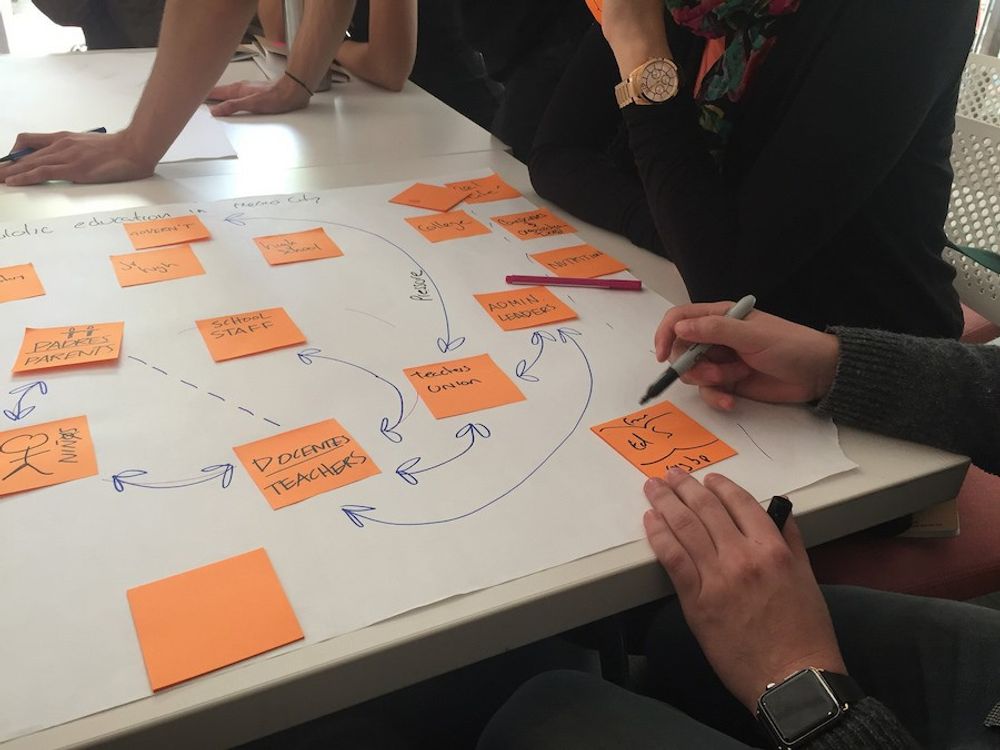
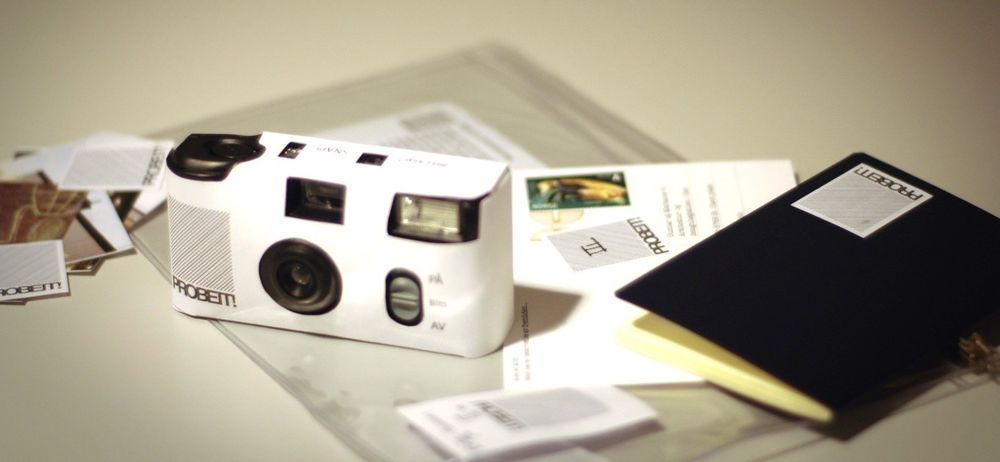


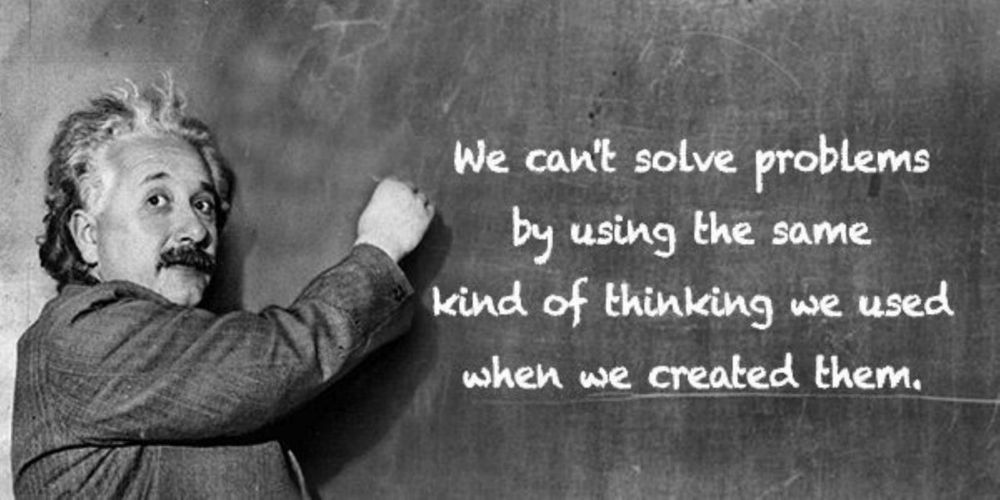

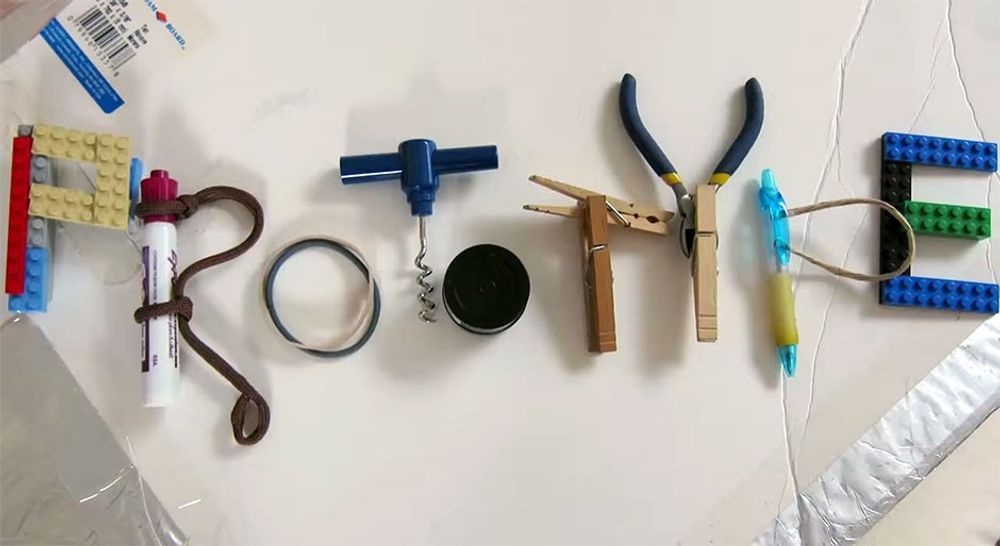
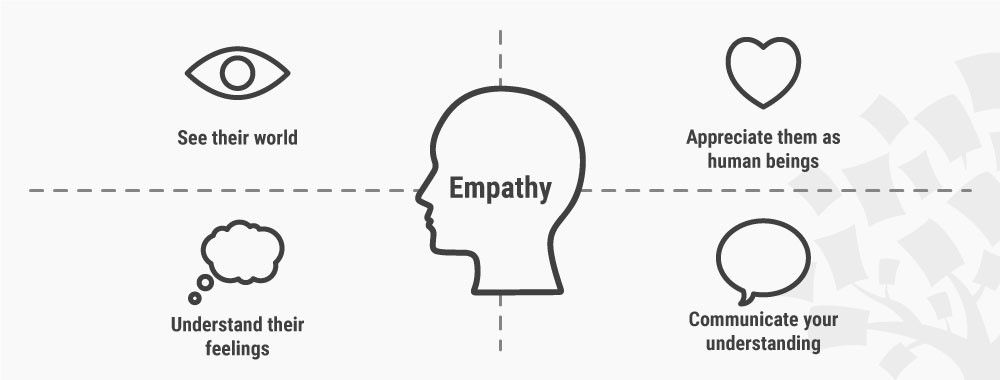
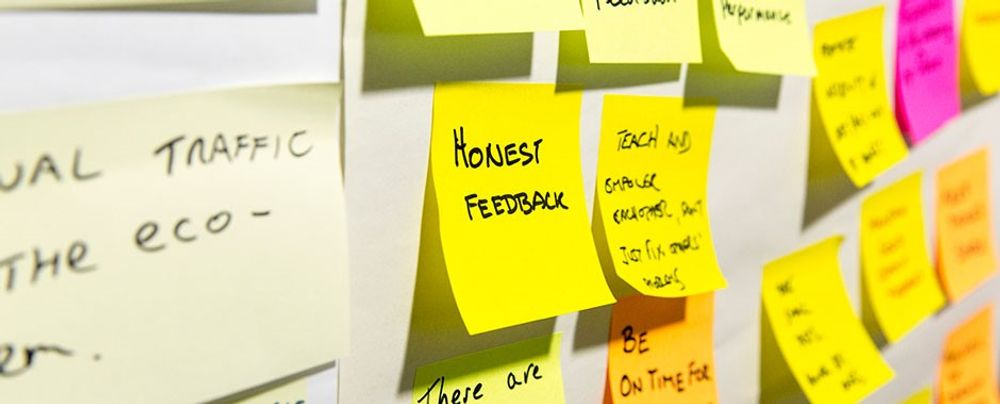
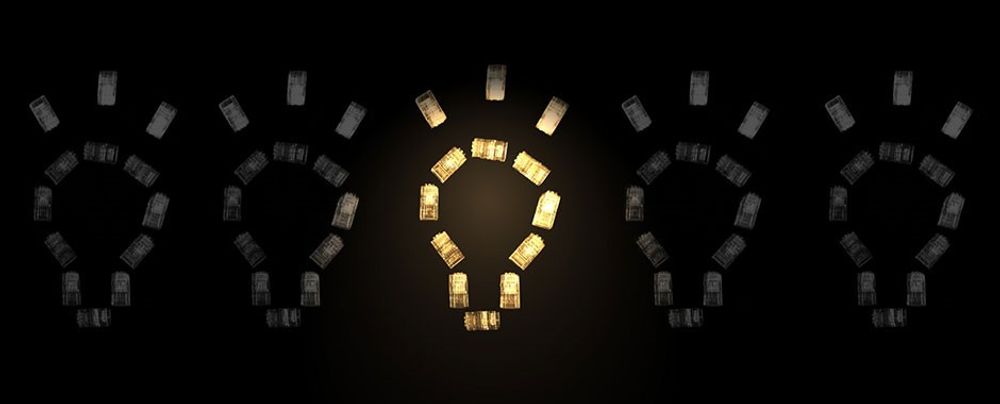
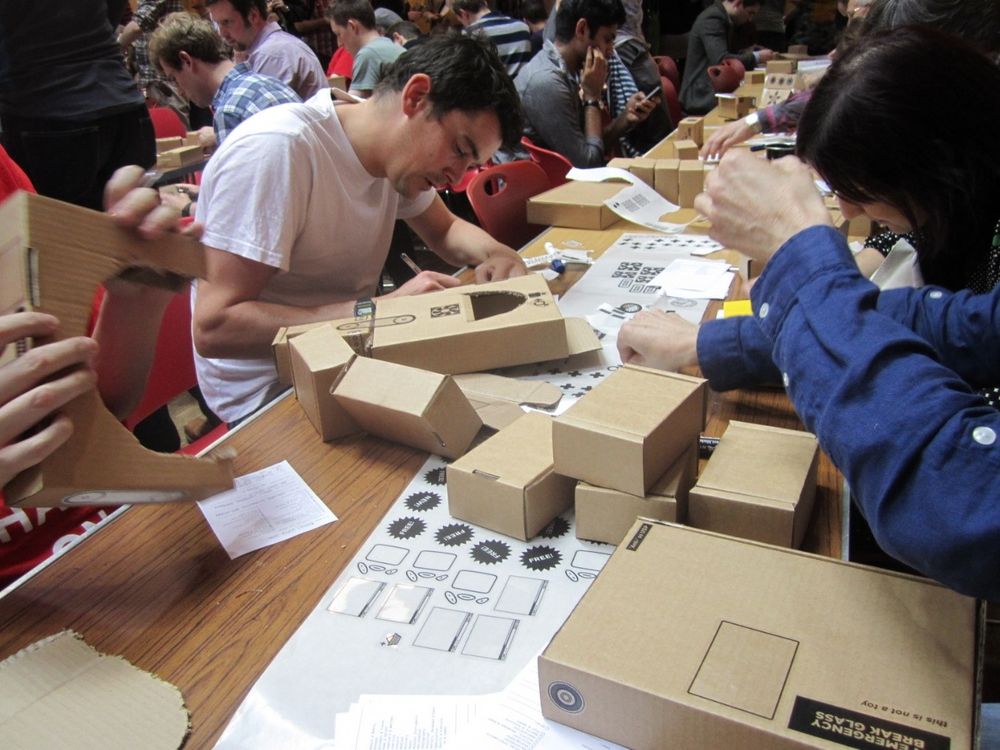

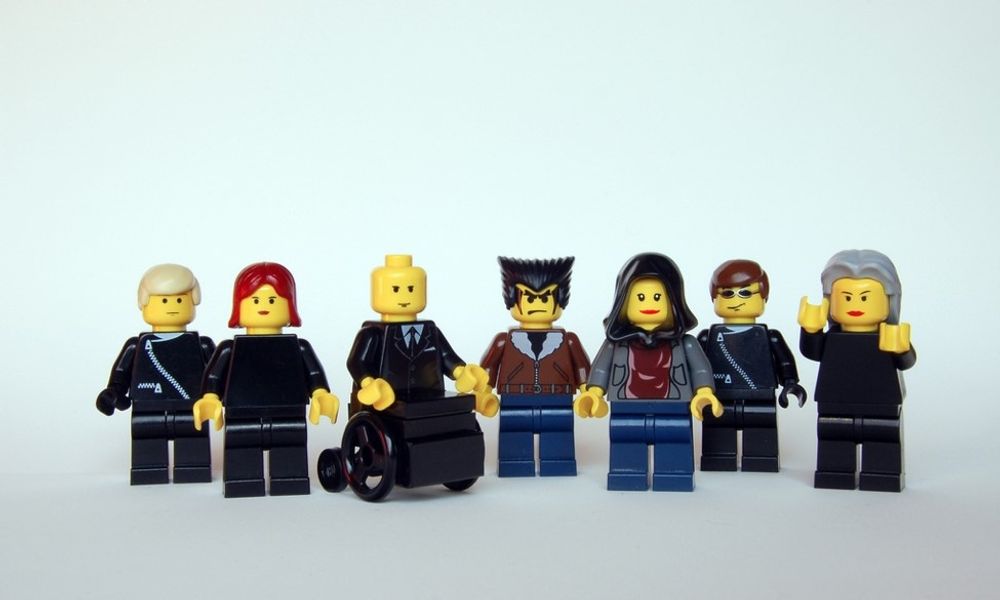
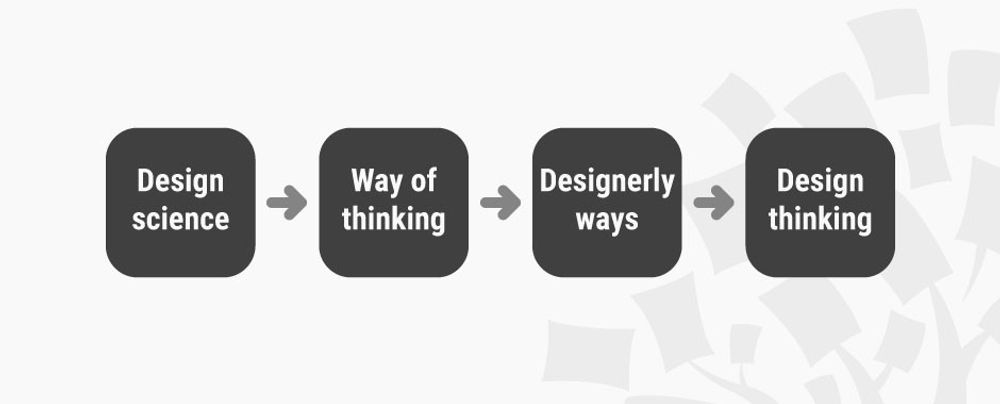
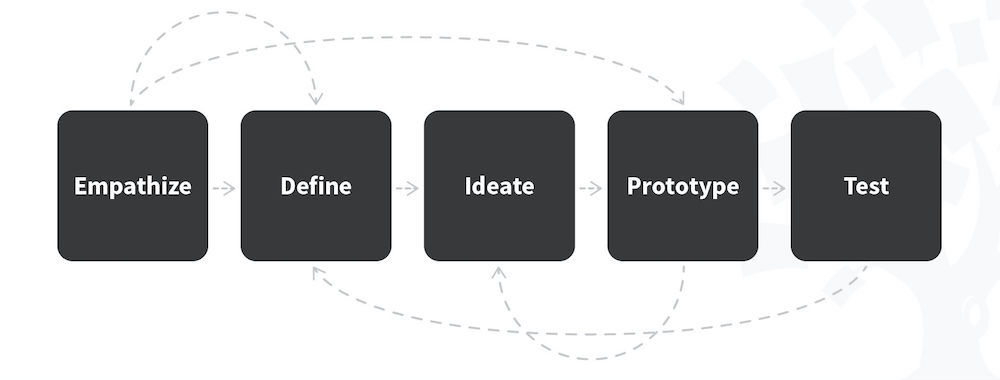

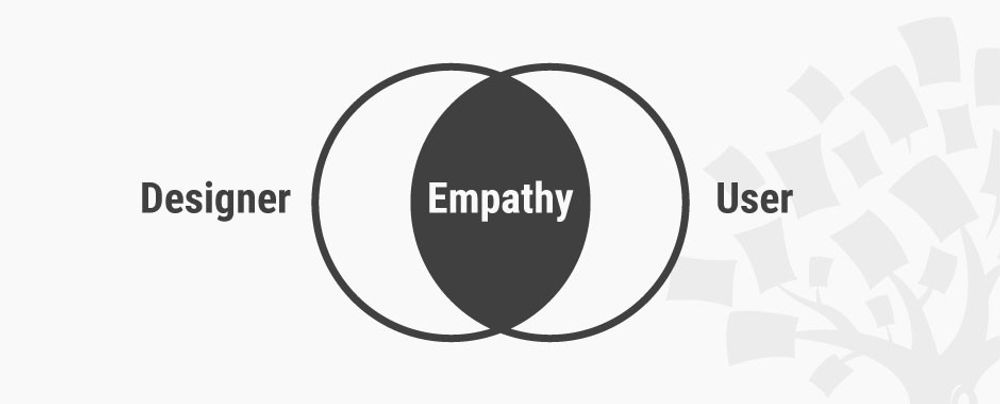
We believe in Open Access and the democratization of knowledge. Unfortunately, world-class educational materials such as this page are normally hidden behind paywalls or in expensive textbooks.
If you want this to change, , link to us, or join us to help us democratize design knowledge!
